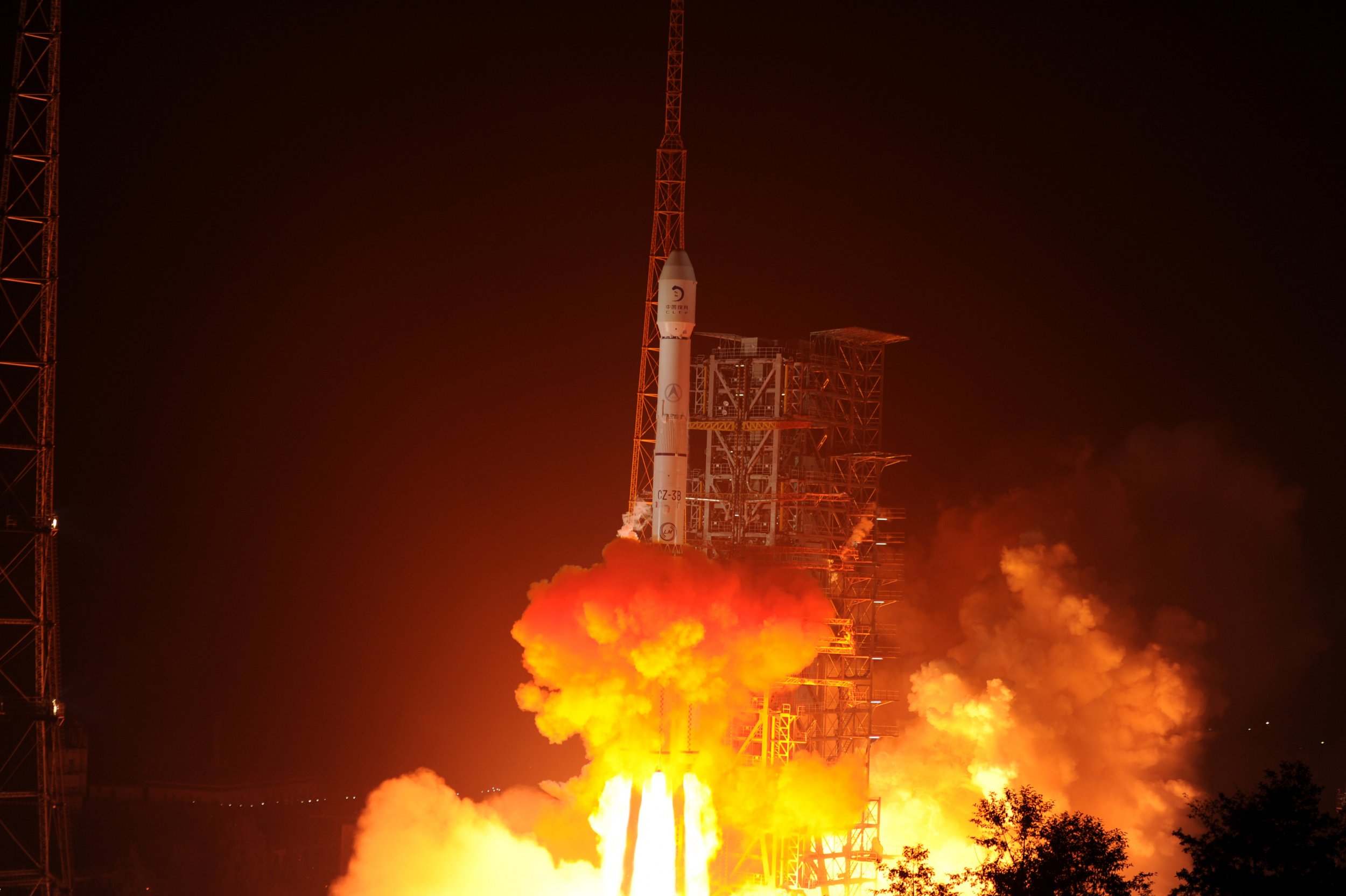
For more than a decade, China has set its sights on the far side of the Moon. This year, they want to take two more big steps toward reaching that goal with the Chang'e 4 project, two satellites that are currently expected to launch later this year.
The culmination of the project will be a mission that lands on the far side of the Moon. But before that spacecraft takes off, China needs to send a communications satellite to hang out above the far side of the Moon and pass signals back to Earth, which could happen as early as June.
The Moon is what's called tidally locked, which means the same side always faces Earth. Humans only saw the far side of the moon in 1959, when a Russian mission sent the first photos of it back to Earth. No country has ever landed on the far side of the Moon, which is a much more difficult accomplishment than landing on the side of the Moon that faces us. The terrain is more hazardous, so a lander needs to be more advanced to safely settle on the surface and navigate safely. One potential landing site is the South Pole-Aitken basin, which is the single largest dent on the Moon's surface.
But the terrain isn't the only problem; communication is, too. Other Moon missions talk easily with their minders back on Earth, but for a robot on the far side of the Moon, there's a huge amount of rock in the way.
That means a lander needs to bounce its communications off the relay satellite to maneuver around the Moon. The communications satellite China is launching this year will sit at what scientists call the second Earth-Moon Lagrangian point, or EML-2, about 37,000 miles above the far side of the Moon. Lagrangian points, found where the gravitational pull of two separate bodies creates a sort of balance, are sometimes nicknamed "parking places" because they are stable places to put an orbiting spacecraft.
Read more: India Is Going to Beat Us Back to the Moon—Here's Their Plan
China had originally planned to launch a different mission, called Chang'e 5, before the Chang'e 4 mission. That delayed spacecraft will not just land on the far side of the Moon, it will also bring a sample of the lunar far side back to Earth for scientists to analyze in their laboratories. Those would be the first Moon samples brought to Earth since 1976. But that mission relies on the large Long March 5, which failed a key test launch in 2017. China will likely want one or two successful tests of that rocket before they risk the satellite on it.
NASA scientists have also discussed visiting L2 and studying the far side of the Moon, but the agency doesn't have any firm plans in place.
Uncommon Knowledge
Newsweek is committed to challenging conventional wisdom and finding connections in the search for common ground.
Newsweek is committed to challenging conventional wisdom and finding connections in the search for common ground.
About the writer
Meghan Bartels is a science journalist based in New York City who covers the science happening on the surface of ... Read more





